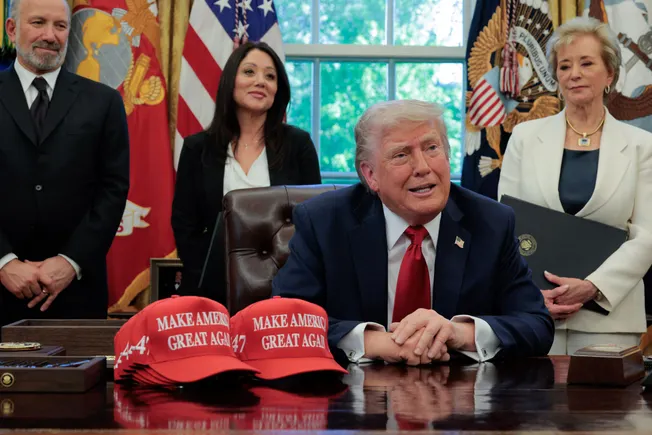Trump Issues New Executive Orders Focused on AI and School Discipline

Trump’s Executive Orders on AI in K-12 Education and School Discipline
Former President Donald Trump recently signed executive orders aimed at enhancing artificial intelligence (AI) education in K-12 schools and revising school discipline policies. These directives reflect a significant shift in educational strategy and disciplinary measures within the U.S. education system.
Advancing AI Initiatives in Education
Formation of the AI Education Task Force
One of the main focuses of the AI-related executive order is the establishment of a White House AI education task force. This group intends to synchronize federal efforts to integrate AI into K-12 education. It will comprise several key stakeholders, including:
- The Secretaries of Education, Agriculture, Labor, and Energy
- The Director of the National Science Foundation
- Various federal agency representatives
The task force’s mission is to promote AI literacy and proficiency in schools. To achieve this goal, the group plans to integrate AI concepts into existing curricula, provide comprehensive training for teachers, and develop initiatives that foster early exposure to AI topics. The end goal is to cultivate an "AI-ready workforce" that can innovate within the American economy.
Implementing Comprehensive AI Training
The task force will also be responsible for forming public-private partnerships with:
- Industry organizations
- Academic institutions
- Nonprofit organizations
These partnerships are expected to offer essential AI resources to K-12 schools across the country. Within 180 days of launching the first partnerships, the task force must ensure that any identified federal funding is ready for use in AI educational programs.
Additionally, Trump’s order mandates that U.S. Secretary of Education, Linda McMahon, prioritize AI training programs for teachers. This includes utilizing grant programs from both the Elementary and Secondary Education Act and Title II of the Higher Education Act. These programs aim to help educators better understand AI, thereby reducing administrative burdens, enhancing training and evaluation processes, and incorporating AI fundamentals across various subjects.
Reinstatement of School Discipline Policies
Addressing Racial Discrimination in Discipline
The second executive order issued by Trump focuses on K-12 educational discipline policies. It calls for Secretary McMahon to provide guidance within 30 days concerning states’ and school districts’ responsibilities to avoid racial discrimination in discipline under Title VI of the Civil Rights Act. This law prohibits racial discrimination in federally funded programs.
Trump’s order critiques previous federal guidelines for being grounded in “discriminatory” equity ideologies. It references a 2014 federal directive that cautioned schools against racially disproportionate discipline practices, warning of potential loss of federal funding. The new executive order aims to reverse these guidelines and reinforces that disciplinary decisions should solely reflect individual student behavior and actions.
Actions Against Non-Compliance
Under the new order, McMahon will be tasked with enforcing actions against states and school districts that fail to adhere to Title VI protections. This includes working alongside other government officials such as:
- Attorney General Pam Bondi
- U.S. Secretary of Health and Human Services Robert F. Kennedy Jr.
- U.S. Secretary of Homeland Security Kristi Noem
Together, they will assess the presence of any “discriminatory-equity-ideology-based” discipline practices in public schools.
In response to these initiatives, McMahon emphasized the importance of making disciplinary decisions based solely on students’ actions rather than unjustified equity concerns. She articulated a vision where students learn essential moral discernment early in their education and where safety is prioritized over adherence to previous equity policies.
Broader Implications of the Orders
Trump’s two K-12-focused executive orders are part of a larger package that includes additional initiatives related to higher education. These include topics such as accreditation, support for historically Black colleges and universities, workforce training, and policies regarding foreign gifts to colleges. By promoting AI in education and revising school discipline measures, these directives aim to prepare students for a rapidly changing job market while addressing concerns around equity in school environments.





